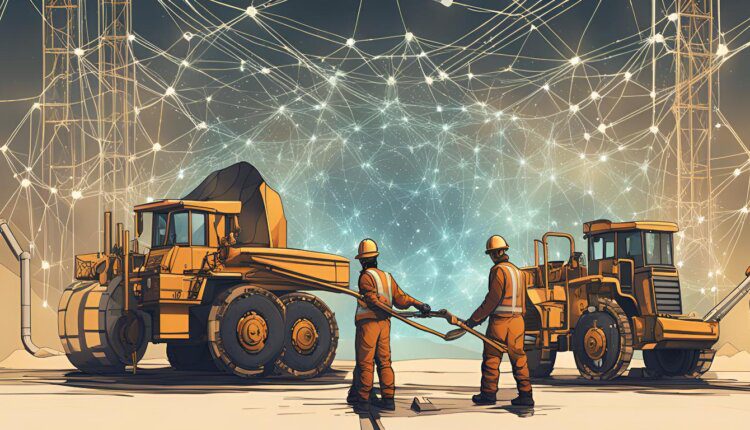Understanding Mining Pools: How They Shape the Future of Proof of Work Systems

Mining pools play a crucial role in the Proof of Work (PoW) blockchain systems, enabling miners to combine resources and increase their chances of earning rewards. While these pools offer advantages like steady income and lower risk, they also pose challenges related to centralization and security.
Cryptocurrency mining is a vital component of blockchain technology, especially within Proof of Work (PoW) systems. In these systems, miners solve complex mathematical puzzles to validate transactions on the blockchain, thereby ensuring the network’s security and integrity. However, as the popularity and difficulty of mining cryptocurrencies like Bitcoin have increased, individual miners face diminishing chances of success. This has led to the rise of mining pools—collaborative groups of miners who pool their resources to enhance their chances of successfully mining blocks and earning rewards.
Understanding Proof of Work (PoW)
Online advertising service 1lx.online
To grasp the significance of mining pools, it is essential to first understand PoW. PoW is a consensus mechanism that ensures all participants in a cryptocurrency network agree on the state of the blockchain. Miners compete to solve cryptographic puzzles, and the first to solve the puzzle gets the right to add a new block to the blockchain, receiving a reward in the form of cryptocurrency. As more miners join the network, the difficulty of these puzzles increases, making it harder for individual miners to solve them on their own.
What Are Mining Pools?
A mining pool is a group of miners who combine their computational resources, or hashing power, to increase their likelihood of solving a cryptographic puzzle and earning rewards. When a pool successfully mines a block, the rewards are distributed among participants based on the amount of hashing power each miner contributed. This collaborative approach reduces the risks for individual miners, particularly those with less powerful hardware, by providing a more consistent income stream.
How Mining Pools Work
Mining pools operate by distributing the work of solving cryptographic puzzles among all participating miners. The process involves several steps:
- Joining a Pool: Miners select a pool based on factors like size, fees, and payout schemes.
- Distributing Work: The pool’s server assigns different parts of the puzzle to each miner, optimizing the pool’s overall hashing power.
- Mining Process: Miners use their resources to solve their portion of the puzzle, generating hashes until they find a valid one.
- Submitting Shares: Miners submit potential solutions (shares) that meet the pool’s difficulty requirements, which are used to determine their share of the rewards.
- Validating Shares: The pool’s server validates these shares, and if one meets the network’s difficulty level, the block is added to the blockchain.
- Distributing Rewards: The pool rewards miners based on the number of shares they contributed.
Types of Mining Pool Payout Schemes
Different mining pools use various payout schemes to distribute rewards:
- Pay-Per-Share (PPS): Miners receive a fixed reward for each share submitted.
- Proportional (PROP): Rewards are distributed based on the number of shares contributed during a mining round.
- Pay-Per-Last-N-Shares (PPLNS): Only the most recent N shares are considered, rewarding long-term participation.
- Score-Based: Shares are weighted based on when they are submitted, discouraging pool-hopping.
- Shared Maximum Pay Per Share (SMPPS): Similar to PPS but with a maximum payout limit.
- Equalized Shared Maximum Pay Per Share (ESMPPS): SMPPS with equal distribution of the maximum payout.
- Double Geometric Method (DGM): A hybrid scheme that combines elements of PPS and PPLNS.
Online advertising service 1lx.online
Advantages and Disadvantages of Mining Pools
Mining pools offer several benefits, such as increased reward probability, steady income, and accessibility for small-scale miners. However, they also present challenges, including centralization risks, pool fees, reliance on pool operators, and potential security vulnerabilities.
The Impact of Mining Pools on the Cryptocurrency Ecosystem
Mining pools have democratized access to mining, contributing to the growth and decentralization of many cryptocurrencies. However, the concentration of hashing power within a few large pools raises concerns about centralization, which could threaten the security and decentralization of blockchain networks.
Mining Pools and the Future of Proof of Work
Online advertising service 1lx.online
The future of mining pools may be influenced by several factors, including the transition to Proof of Stake (PoS) systems, advancements in mining hardware, regulatory changes, and the development of decentralized mining pools. As the cryptocurrency industry evolves, so too will the role of mining pools in shaping the landscape of blockchain technology
Our creator. creates amazing NFT collections!
Support the editors - Bitcoin_Man (ETH) / Bitcoin_Man (TON)
Pi Network (Guide)is a new digital currency developed by Stanford PhDs with over 55 million participants worldwide. To get your Pi, follow this link https://minepi.com/Tsybko and use my username (Tsybko) as the invite code.
Binance: Use this link to sign up and get $100 free and 10% off your first months Binance Futures fees (Terms and Conditions).
Bitget: Use this link Use the Rewards Center and win up to 5027 USDT!(Review)
Bybit: Use this link (all possible discounts on commissions and bonuses up to $30,030 included) If you register through the application, then at the time of registration simply enter in the reference: WB8XZ4 - (manual)
